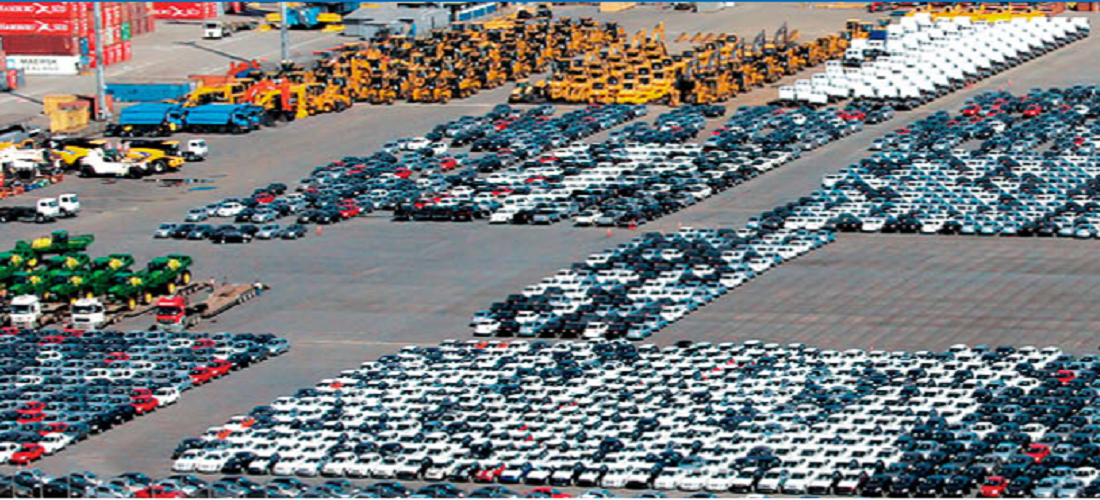
Stagnation in Argentina makes way for Brazilian exports of expensive cars
Dec, 08, 2022 Posted by Gabriel MalheirosWeek 202249
The sales to foreign markets will be one of the most memorable parts of the year for Brazil’s automobile industry. Problems caused by the situation in Argentina, where restrictions on accessing foreign exchange make imports difficult, have been offset by increased sales to other countries. Argentina’s market share in Brazilian vehicle exports fell from 36% in 2021 to 29% this year. On the other hand, Mexico and Colombia increased their shares from 14% to 16%. Chile’s has risen from 10% to 12%.
These new markets help to increase revenue by offsetting the losses in volumes shipped to Argentina, which increased by 34.3% in the year-to-date, from January to November. In eleven months, Brazil’s automobile sales totaled US$ 9.6 billion. The amount is nearly double what it was two years ago. As a result, vehicle exports generated $4.8 billion in revenue for the country from January to November 2020.
According to the president of the industry association Anfavea, Márcio de Lima Leite, cars have become more sophisticated in general, which makes them more expensive, but also Mexicans, Colombians, and Chileans tend to buy cars with “higher aggregate value” than their Argentine counterparts.
Although Argentina maintains its position as the leading destination for this industry’s exports, the focus now is on increasing demand in other nearby countries. “Due to the country’s internal restrictions, Argentina is losing importance in comparative terms,” points out Leite.
Vehicle exports grew 55% in November, with 43.4 thousand units, generating revenues of US$ 975.8 million, an increase of 50.5% compared to the same month last year. YTD, foreign sales totaled 334.8 thousand vehicles, a volume 34.3% higher than in the same period of 2021. Cumulative revenue (US$ 9.6 billion) was 40.6% higher than in the same period of 2021.
Sales abroad continue at a rapid pace because component supply has begun to normalize, though Anfavea believes the problem, which primarily involves semiconductors, will persist in the coming months. Despite this, the blow felt this year will be smaller than in 2021. The production of almost 400,000 vehicles was halted last year due to the lack of parts. According to Anfavea data, the loss this year was only 250 thousand units up to November.
The situation of the domestic market, albeit also on a rising trend, raises a red flag for industry leaders as the share of financing reached the lowest point in the sector’s history in November. According to Anfavea, 70% of the deals were made in cash. Leite explains that this movement indicates that consumers who need it the most cannot access credit.
In July, Anfavea estimated a domestic market of 2.1 million vehicles, representing an increase of 1% compared to 2021. However, year-to-date, up to November, 1.88 million units were sold, a decrease of 1.3% compared to the same period in 2021.
According to the director, despite this concern, the persistent shortage of components will make the first months of 2023 be characterized by demand above what the industry can produce.
Auto industry representatives celebrated the November results. The daily average of sales was the best since December 2020. That month, 204,000 cars, light commercial vehicles, trucks, and buses were sold, up 17.9% compared to last year. In the automobile segment, the result was an increase of 16%.
According to Anfavea’s president, despite the lack of components and the possibility that World Cup matches could disrupt car sales slightly, November results indicate that the association’s final projections for the year will be met.
In its latest forecast, Anfavea estimated a domestic market of 2.1 million vehicles, representing an increase of 1% compared to 2021. However, until November, 1.88 million units had been sold in the year, a decrease of 1.3% compared to the same period in 2021.
Source: Valor Econômico
To read the full original article, please go to: https://valor.globo.com/empresas/noticia/2022/12/08/estagnacao-na-argentina-facilita-exportacao-de-carros-mais-caros.ghtml
-
Trade Regulations
Dec, 23, 2019
0
China will reduce import tariffs on 850 products in 2020
-
Economy
Jun, 26, 2023
0
Brazil announces USD 1374bn trade surplus in 4th week of June
-
Ports and Terminals
Aug, 02, 2021
0
Port complex project in Maricá, RJ moves forward again
-
Meat
Oct, 16, 2019
0
ABPA cuts estimate for pork exports in 2019


